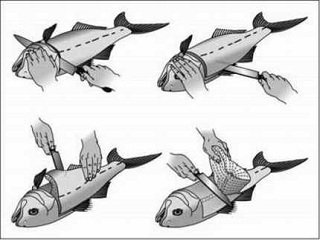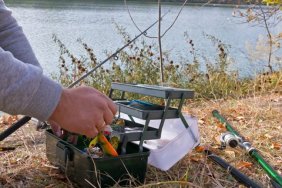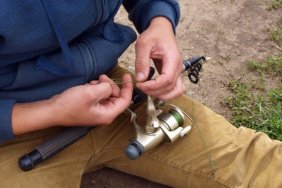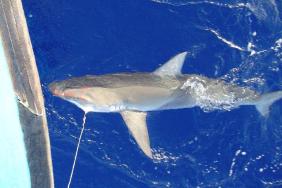 One of the most rewarding experiences of fishing is filleting your catch at the end of a long day on the water and enjoying the fruits of the day’s labor around the table. However, cleaning a fish can be an intimidating task if you’ve never tried it before, and it requires a steady, careful hand to perform without hurting yourself or mutilating the fish beyond any point of use. Today, I’m providing those of you who have never cleaned a fish with a simple, step-by-step guide that will have you hosting a fish fry on a weekly basis this summer.
One of the most rewarding experiences of fishing is filleting your catch at the end of a long day on the water and enjoying the fruits of the day’s labor around the table. However, cleaning a fish can be an intimidating task if you’ve never tried it before, and it requires a steady, careful hand to perform without hurting yourself or mutilating the fish beyond any point of use. Today, I’m providing those of you who have never cleaned a fish with a simple, step-by-step guide that will have you hosting a fish fry on a weekly basis this summer.
First and foremost, you’ll need the proper tools for the job. A reliable fillet knife, suited for the size fish you’ll be filleting, is the most important piece of equipment. Next, I advise picking up a cutting board and fillet gloves—especially if you’re a beginner. If you’re an avid panfish angler, I’d also suggest in investing in a tumble drum scaler. These beauties scale dozens of panfish at once and ready them for cleaning in minutes. An electric fillet knife is also a good choice for large loads of fish, once you get practice, of course.
Now for the nitty gritty. For smaller fish, you’ll start by cutting off the head just below the gills. Next, while holding the fish by the tail, Cut towards the head with the knife pointing away from you, using the spine to guide the blade. The smaller size of panfish makes cleaning them swift and easy once you’ve done it a few times. A seasoned pro can zip through a cooler full of bluegill or perch in no time at all.
Larger fish, however, require a little different approach. To begin with a larger species, start by making a deep cut just behind the gills. Next, cut a slit a few inches along the top of the fish’s spine. Using your knife, you’ll need to carefully separate the fish’s flesh from the bones. After doing this, the fish will open like a book cover. Finally, finish by cutting down the spine and then remove the fillet from the body.
If you’ve tried cleaning your first fish and, after a few test runs, enjoy it, I suggest investing in a portable cleaning station, or even building your own. Having a dedicated area for filleting fish goes a long way towards making the process run more smoothly and it will make cleaning up at the end of the day easier as well. As I mentioned earlier, as well, ice fishermen or avid panfishermen will find a tumbling scaler to be very useful, as it quickly cleans the scales from smaller fish in no time at all.
Ensuring that you scale your fish correctly means no bones during the best part of the process; the eating phase. Not only will your guests appreciate it, but serving them properly cleaned fillets will have you looking more and more like a pro and it will give you such a sense of accomplishment at the end of the day.








